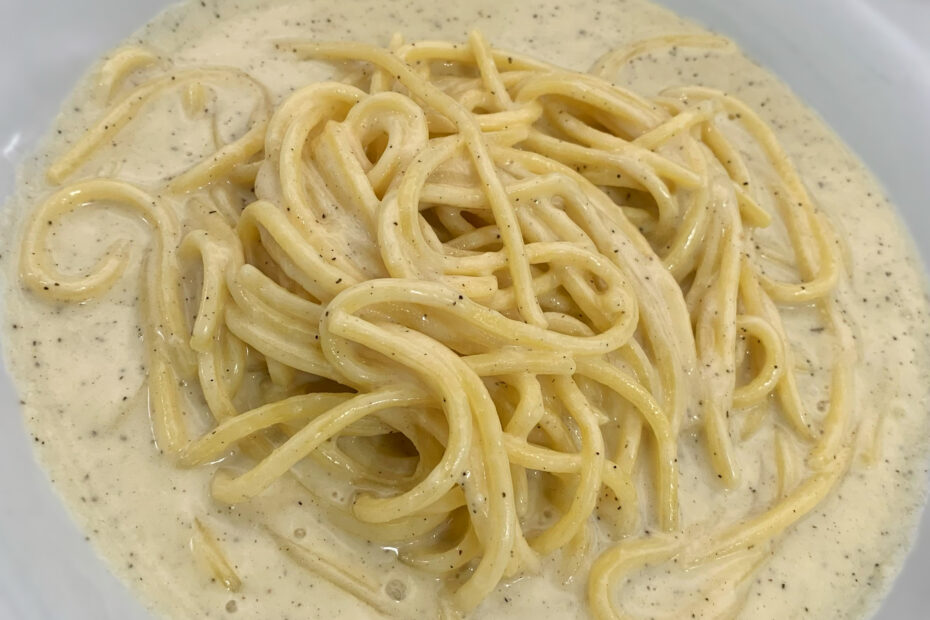While not part of the #PugliaKitchen tradition, cacio e pepe is a much loved Roman pasta dish that we often turn to. This recipe is genius; it combines the simplicity of only three main ingredients, making it a perfect kitchen store cupboard staple, yet packs big flavour.
A good cacio e pepe should be smooth and supremely creamy. All the more incredible given that just like carbonara (a rich Roman sauce made with a combination of beaten egg, dry-cured guanciale and Pecorino Romano) cream should never be an ingredient.
History of Cacio e Pepe
Cacio is the Roman dialect word for pecorino cheese. It is said that the roots of the recipe can be traced back to ancient times when this dish was initially prepared by shepherds who roamed the hills of central Italy. As they tended to their flocks, they carried simple ingredients that could withstand the rigors of their nomadic lifestyle. Combining the saltiness of aged pecorino cheese and the aromatic kick of black pepper, they created a dish that nourished their bodies, satisfied their taste buds and kept them warm while watching their flocks by night – pepper is an aromatic spice that generates body heat in cold temperatures.
In reality it is likely that, again like carbonara and amatriciana (made with guanciale, tomato and pecorino), these dishes – or at least their popular pasta renditions – did not come to the Italian table until the 1800s.
While the Romans had adopted the custom of preparing dough from flour and water and flattening it into a wide sheet called a lagana (a version of today’s lasagna), that was then cut into broad strips and cooked, during the Middle Ages pasta was perceived as a delicacy. Something that should be abandoned during a cost of living crisis.
A 1509 Neapolitan ordinance forbade the making of “taralli, susamelli, ceppule, maccarune, trii vermicelli,” and all other “things made with dough” during times in which the cost of flour increased “as a result of war, famine, or a bad season.” [Alberto Capatti & Massimo Montanari, ‘La cucina italiana. Storia di una cultura’, p66; they note pasta only began to be imported from Sicily to Naples towards the end of the 15th century. It was not until 1501 that pasta was included among basic foods subject to price control. In the middle of the century macaroni and lasagne still cost three times as much as bread].
It took a minor technological revolution in the mid-17th century for macaroni and other types of pasta to be produced at more moderate cost and the process of Italian Unification for pasta to take on the role it now has in the Italian diet.
In the 18th century Neapolitans became known as “the macaroni eaters”, a term previously used for Sicilians: I Napoletani da ‘mangia follia’ a ‘mangia maccheroni’. In 1860, following the annexation of Naples by Piedmont, the national revolution led a culinary revolution. “The macaroni is ready, and we will eat it”, wrote Cavour the first prime minister of a unified Italy.
Until then the poor of a pre-nascent Italy would have been getting their carbohydrates from bread and polenta.
Subsequently, dried cheese, dried guanciale and dried pasta were filling, cheap and did not spoil easily: perfect for a simple, inexpensive meal. And while the first two ingredients would likely have been used locally for “literally centuries,” dishes like cacio e pepe, carbonara and amatriciana likely got their start, not in the mountains, but in the mines and factories that once surrounded the Lazio region encompassing Rome, near where low-income families once lived. [Cacio e pepe: Italy’s beloved three-ingredient pasta dish].
Recipe: Cacio e Pepe
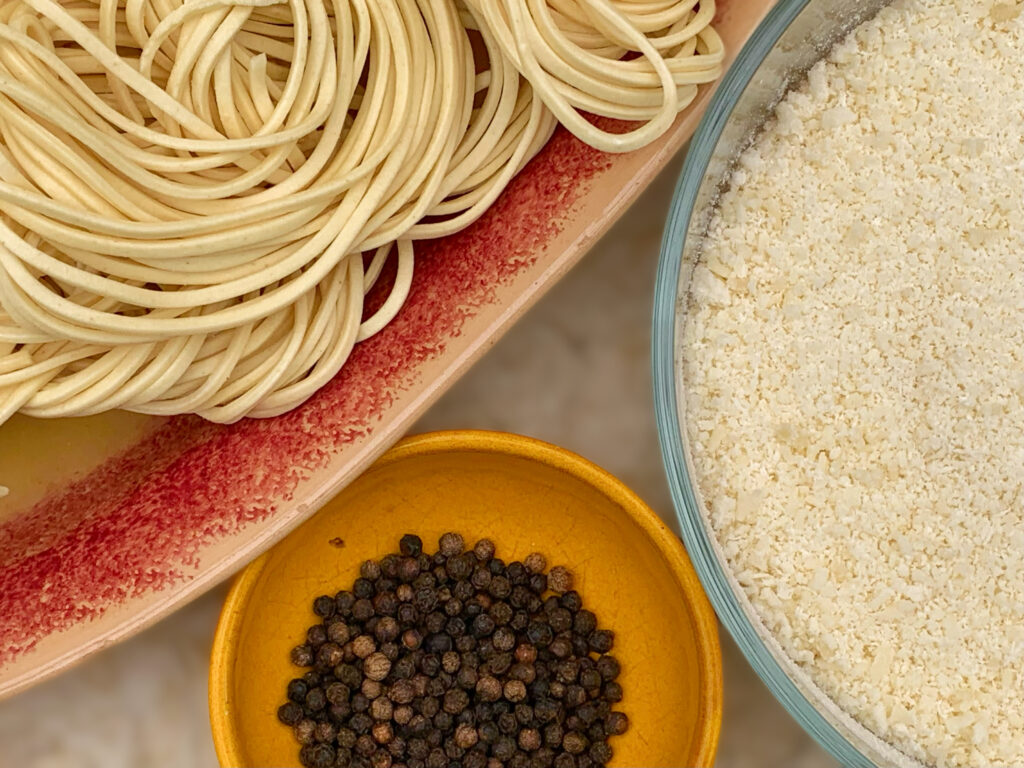
One of the keys to success when preparing a caccio e pepe is avoiding a gloopy mess caused by the caciocrema sauce clumping and separating. We have a couple of #PugliaKitchen tips to help avoid this.
The first is obvious. We only ever use Pecorino Romano DOP. Salty, sharp and delicious.
The next best helpful advice is moderation. Not of ingredients or quality, but of temperature. Temperature is key in getting the caciocrema right. There are three considerations: cheese, pasta liquor and the cooked spaghetti.
Our cheese, if not bought fresh that day, is taken out of the fridge well in advance of cooking. It should be at room temperature, not chilled. Our cheese shop will grate the hard cheese for us, which is helpful. A fine grate helps the process.
The pasta liquor removed while the pasta is cooking should be allowed to cool. Too hot and it is likely that it will spilt your caciocrema. We take a generous bowlful of the starchy pasta water about eight minutes into cooking time and put it to the side somewhere cool. A bowl with a wider surface area will allow it to cool more rapidly.
Finally the spaghetti. We turn off the heat just before it is al dente, and leave it to rest in the water – for no more than a couple of minutes – before lifting it out and adding it to our caciocrema.
Because we always have our own olive oil on hand, sometimes we drizzle a little into our pan or bowl when making the sauce. Not too much, as we want the sharpness of the cacio e pepe to dominate, but just enough to help the science and emulsification of our caciocrema and the starchy pasta water, for that glossy creaminess.
We use spaghetti all chitarra, a square cut dry spaghetti made by our local pastificio. Regular dried spaghetti works well. Use bronze cut spaghetti if you can find it. The sauce clings more easily to more porous, rough-cut spaghetti.
Siete pronti?
Ingredients:
- 400g dried spaghetti alla chitarra
- 150g Pecorino Romano cheese, finely grated
- 2 teaspoons black peppercorns
Method:
Fill a large pot with water and bring it to a boil over high heat. Season well with salt, and add the spaghetti. Stir gently and occasionally to keep the pasta from sticking.
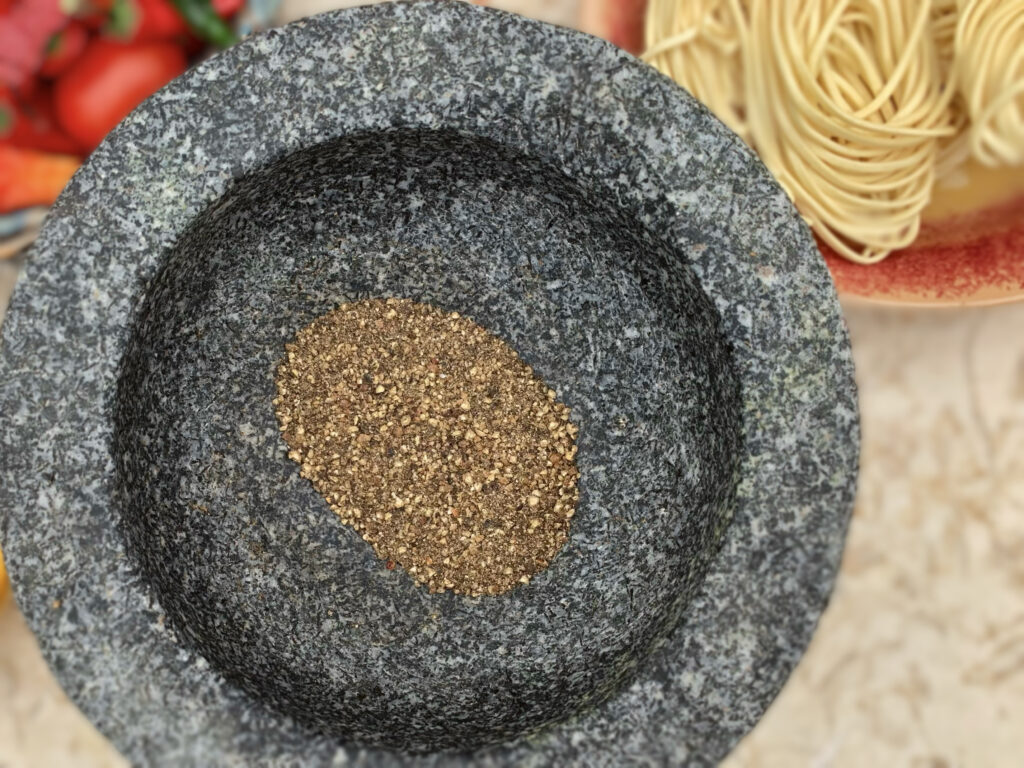
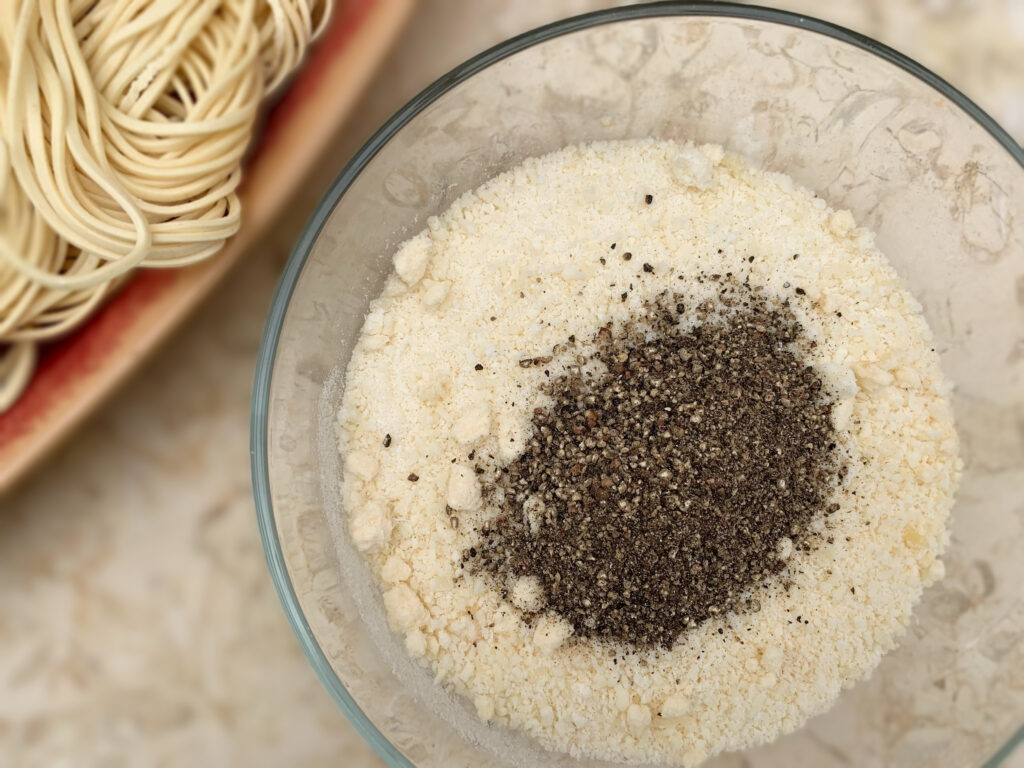
In a dry frying pan, toast the black pepper over medium heat for about 1 minute to release its flavors, until fragrant. Crush the peppercorns with a mortar and pestle.
About eight minutes into the cooking time remove a bowl (not less than 250ml) of starchy pasta liquor. Set this aside to cool.
Prepare the caciocrema. In a large bowl, combine the grated Pecorino Romano and ground black pepper. Mix them together well. Beat in some of the pasta water gradually to make a paste, and then add more until of the liquor until you have a sauce the consistency of a white besciamella, as you would for lasagne.
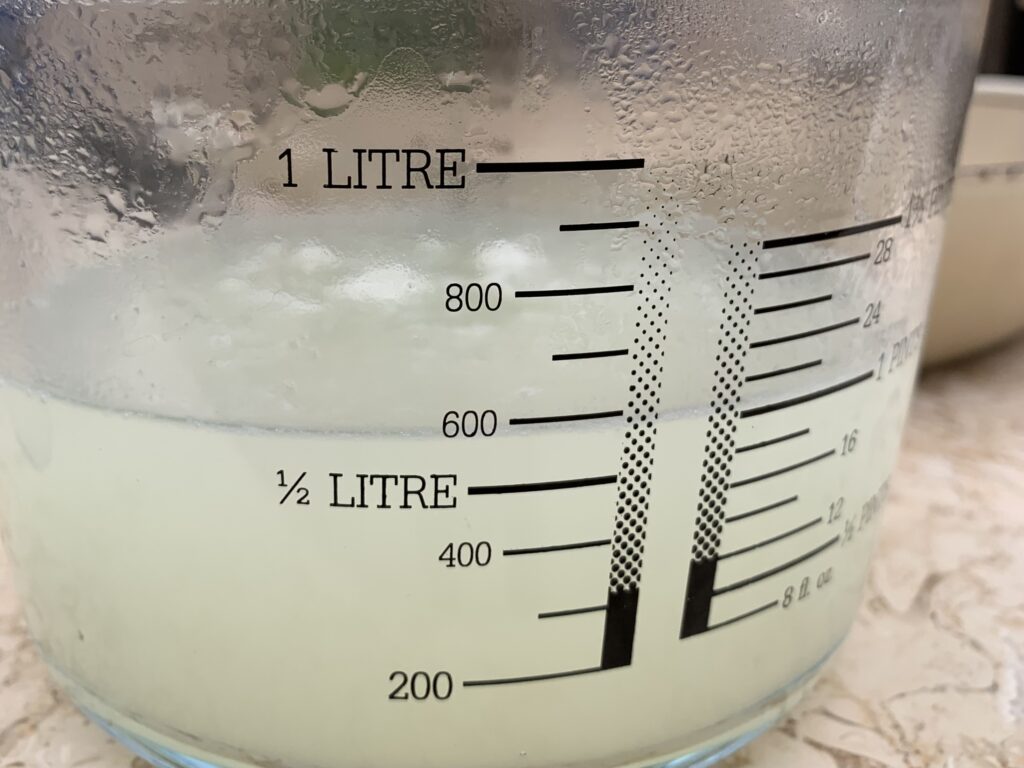
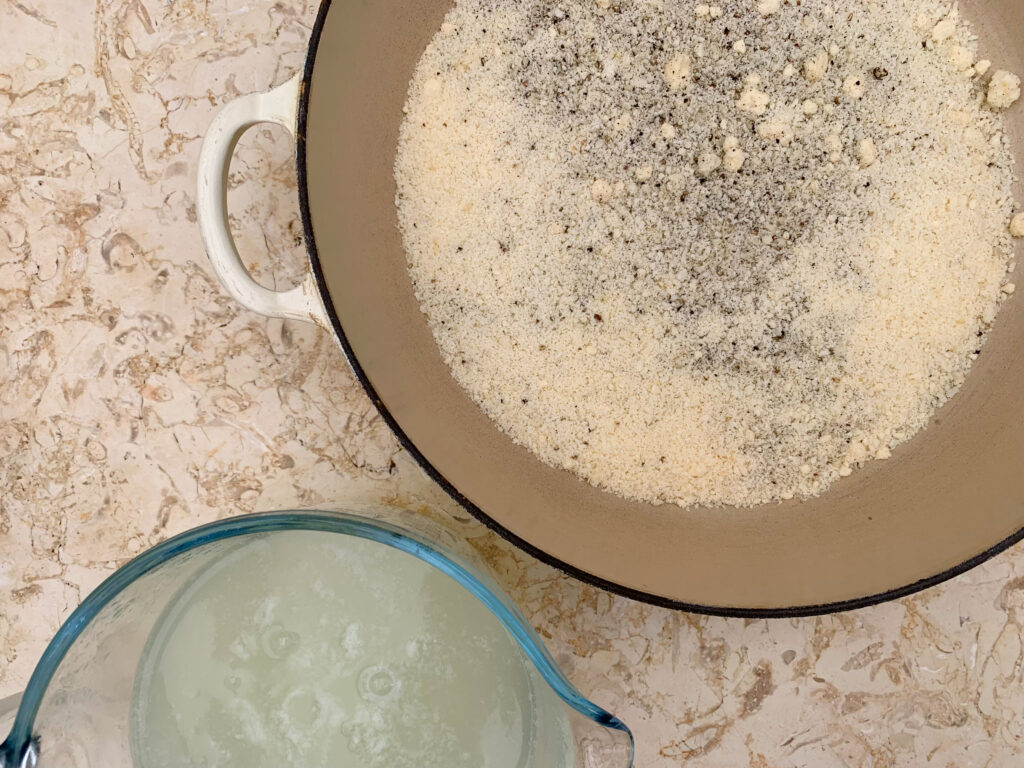
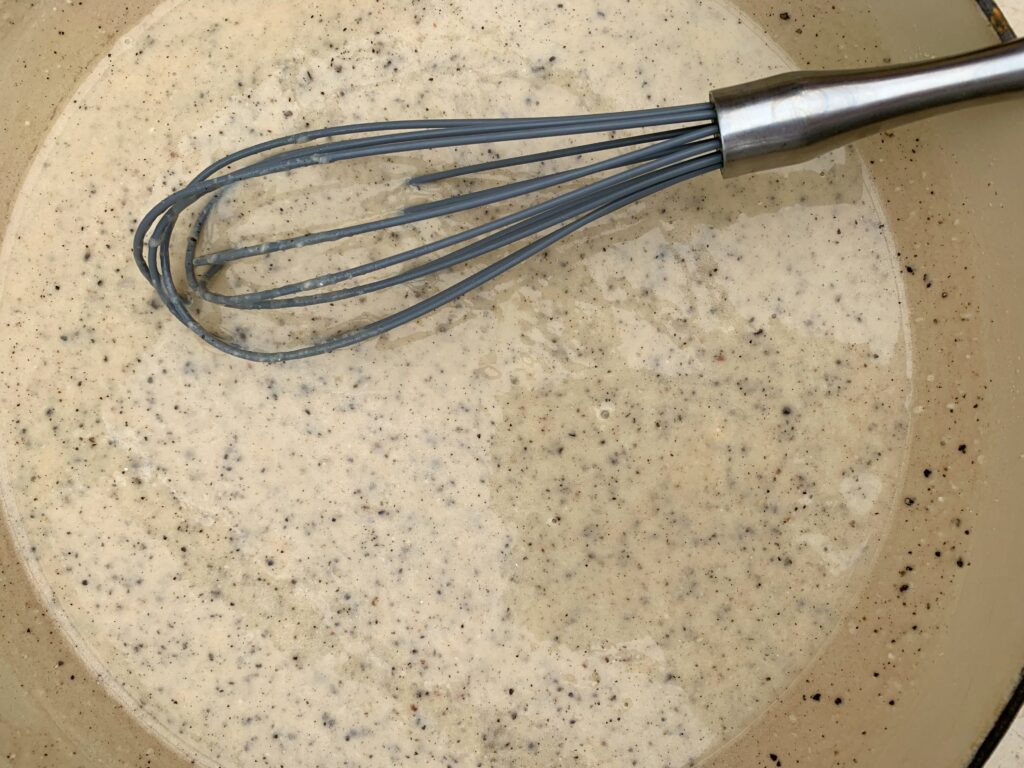
Keep your eye on the spaghetti. Turn off the heat just before it becomes al dente and leave the pasta to rest in the pan for a couple of minutes.
Once your carbocrema is ready and the pasta has rested, lift the cooked spaghetti from the pasta pan using tongs – let it drip a little, no need to shake, and repeat the phrase ‘cacio crema’ 3 times, before dropping the spaghetti into the bowl with the caciocrema. Toss vigorously, working quickly.
Add a splash of the reserved pasta water to the bowl if the sauce needs to slacken and continue to toss the pasta until the pasta is coated in a glossy, creamy deliciousness. The heat from the pasta and the water will help create a smooth sauce. Beat a little harder if it needs more effort to come together.
Serve the cacio e pepe immediately in a warmed dish. Top with some more pepper and freshly grated pecorino.
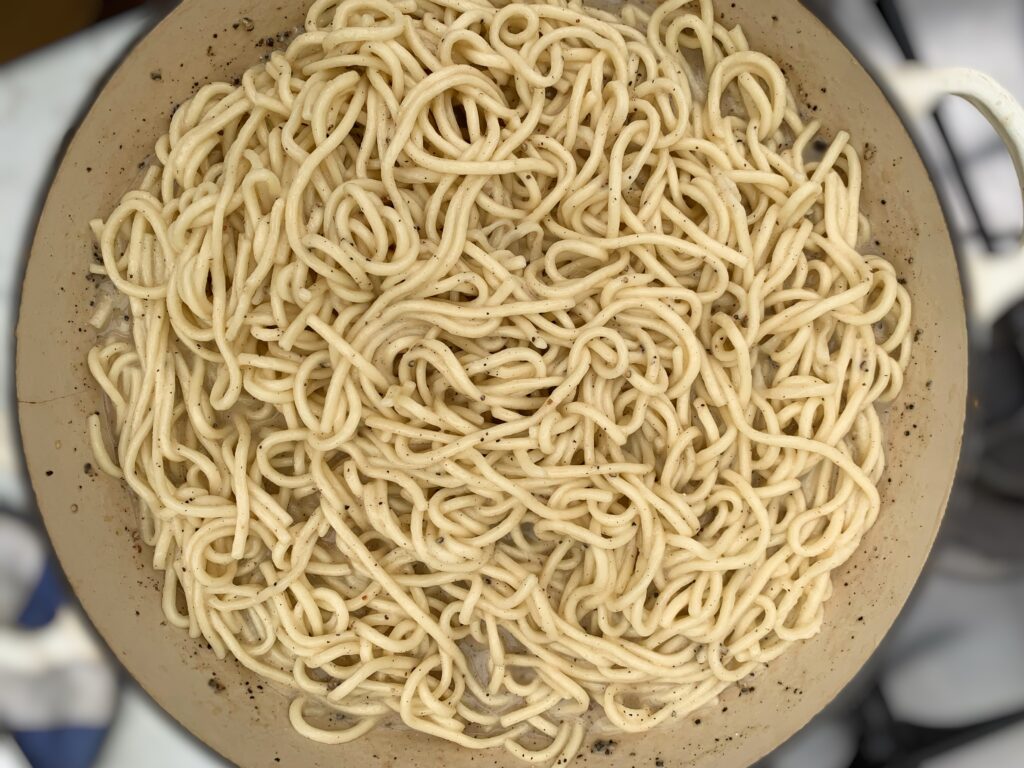
And then some: frittata fit for the beach
With leftover spaghetti we always make a frittata to eat picnic style at the beach.
A cacio e pepe frittata is our favourite, and so easy. This recipe uses approximately 200 – 400 grams of leftover spaghetti in the cacio e pepe sauce.
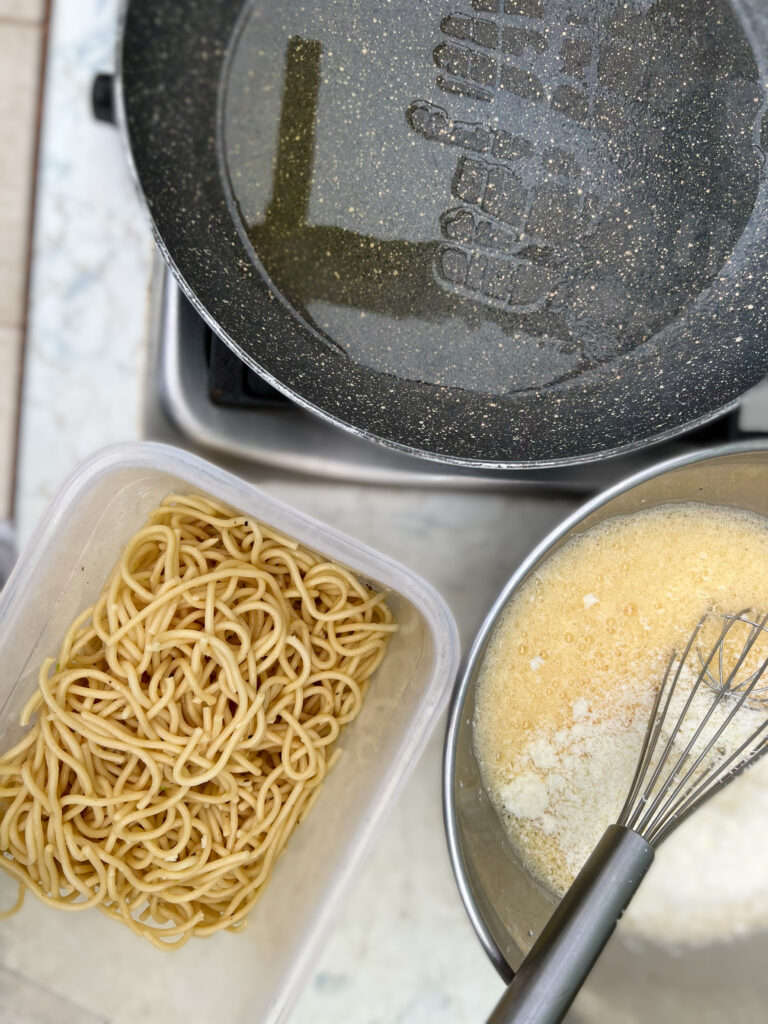
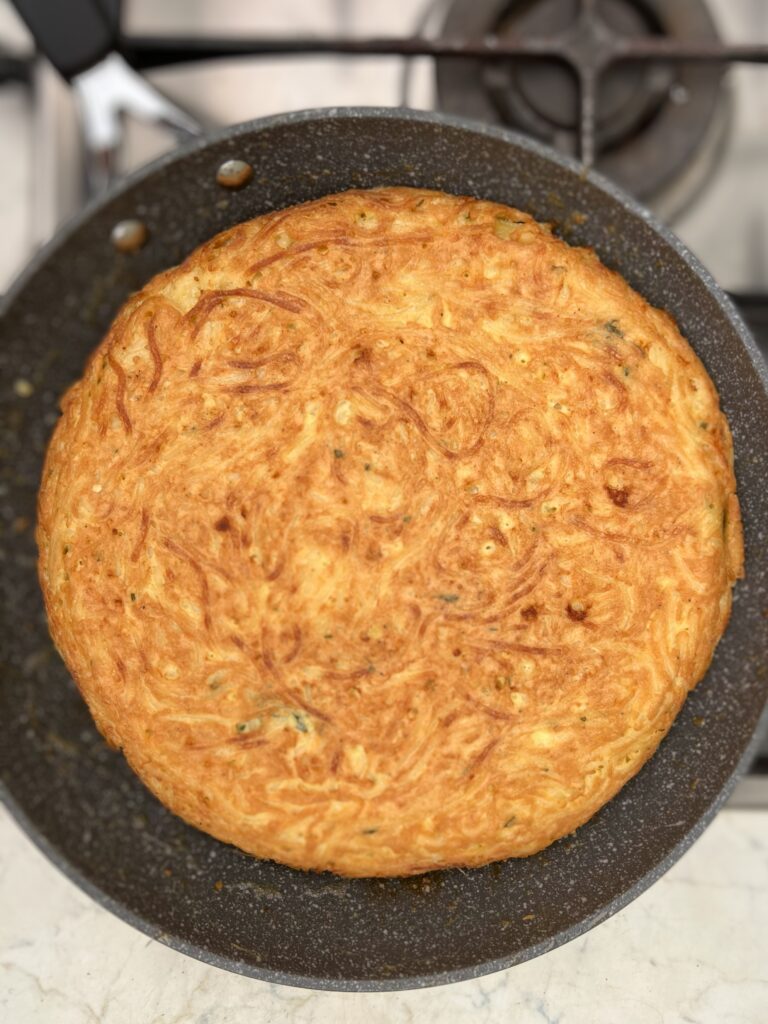
Whisk 6 medium to large eggs until frothy. Add 50g of grated pecorino, and a few more grinds of black pepper. Season with very little salt, and add some chopped parsley if any needs used up.
Take the leftover spaghetti cacio e pepe, add to the egg mix and stir until the spaghetti is well covered.
Heat some olive oil (2 tbsp) in a non-stick frying pan over medium high heat. Make sure the pan is deep enough to hold the spaghetti mixture in a single layer.
Once the oil is hot, pour the spaghetti and egg mixture into the pan. Use a spatula to spread it evenly and press it down slightly. Cover with a lid and cook the frittata on medium heat for about 5-7 minutes, or until the bottom is golden brown and set.
Carefully flip the frittata using a large plate or a lid to cover the frying pan. Slide the frittata back into the pan to cook the other side for an additional 5-7 minutes, or until the frittata is cooked through and golden brown on both sides.
Once cooked, transfer the frittata to a cutting board and let it cool. Slice the frittata into wedges and serve it cold. Typically we cook it the day before.
In realtà this recipe if incredibly flexible and will work with a variety of left over cooked spaghettis, in sauce or white. You can add other ingredients, though as always with southern Italian cuisine, the simpler, the better.
Buon appetito!
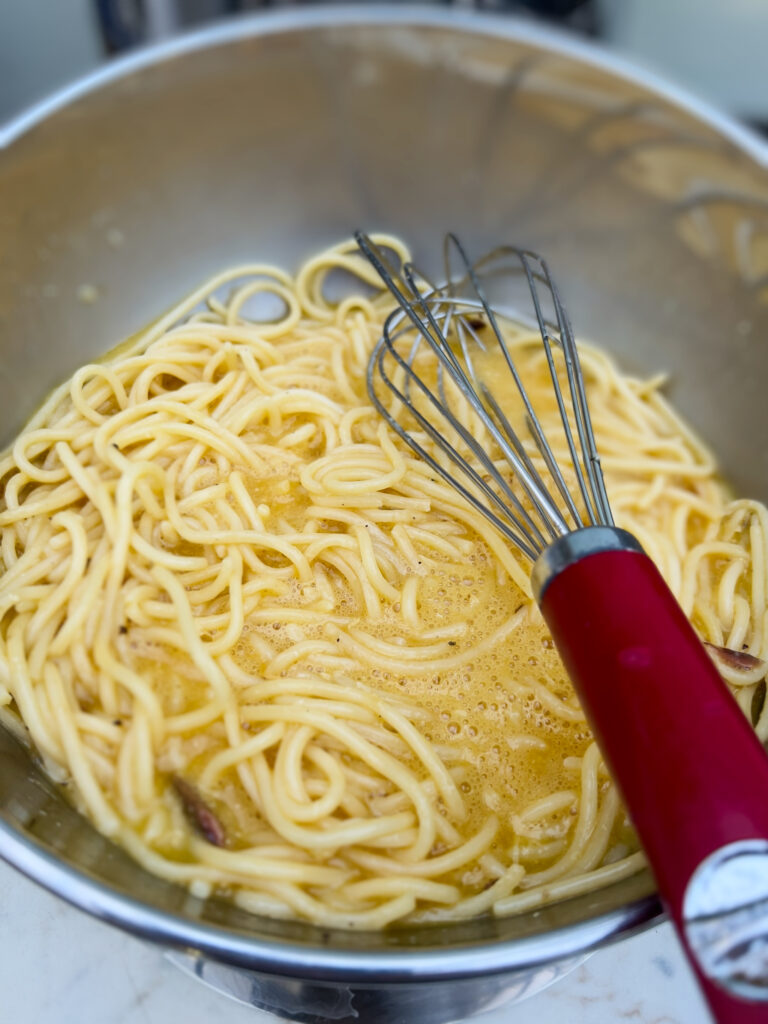
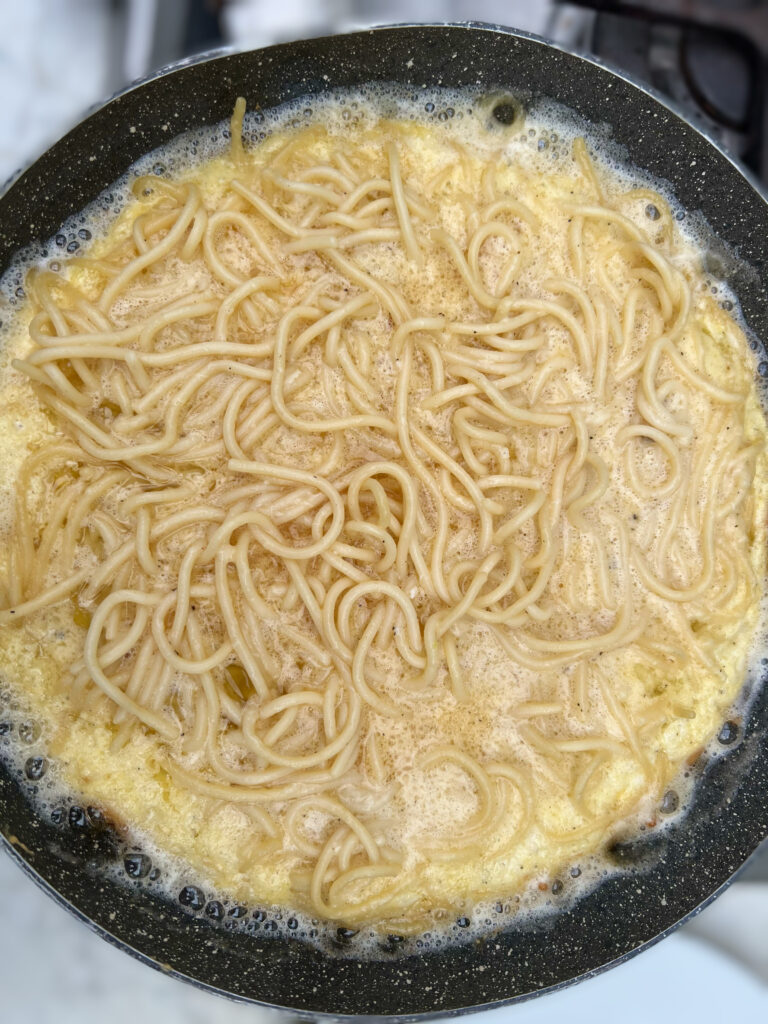
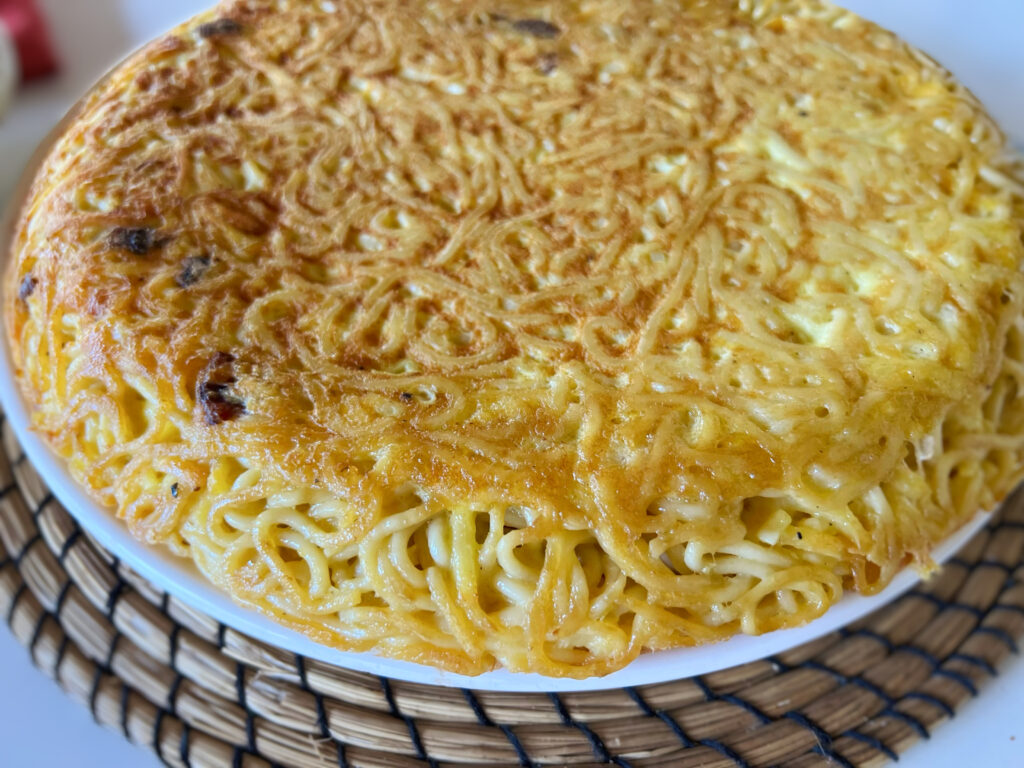
More | The joy of pasta
More | Spaghetti all’assassina
